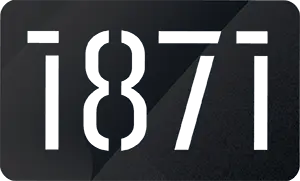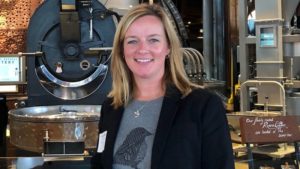Small, versatile cordless barcode scanners such as the Zebra CS60 companion scanners are now indispensable in retail and healthcare given the mobility of staff and need to automate data capture, retrieval and verification across multiple mission-critical workflows. For example, they are used at the patient’s bedside for positive identification (PPID) and to report administered medications. Pocket-sized cordless scanners also enable retail associates to quickly price check items and help checkout shoppers in the middle of the store to minimize long queues.
However, the cordless CS60 form factor – like any mobile device – is at risk of going “missing in action.” If a user puts it down to attend to a patient or search for an item in a stockroom and forgets to pick it back up, an extensive, time-consuming search could ensue. (This is especially true if the scanner is left on a patient’s bed and ends up in the laundry.) Healthcare practitioners and retail store associates are moving at lightning-fast speeds all day long, and they’re often distracted by a slew of requests from colleagues and patients/customers. No one would blame them for accidentally misplacing a device as tiny as the CS60. Yet, the patient and customer experience could be severely hindered if workflows are disrupted while the device is missing.
Plus, if a device moves out of range of the base station for any reason, the Bluetooth® connection may be lost, leading to a frustrating user experience and additional IT intervention. Given how central these scanners are to productivity, it’s imperative to ensure the devices stay within range of the base station – and within reach – at all times.
It’s also critical to keep tabs on the traditional form factor scanners such as those in the Zebra DS8100 Series, which are often used for self-checkout at grocery, retail, and convenience stores, or by quick service restaurant (QSR) staff who might be moving from one place to the next to take orders or payments. Rushed or distracted shoppers might forget to put the scanner back in the station after scanning and paying for items. At times they can be found in a cart in a parking lot, and they can easily fall into a customer’s shopping bag in the flurry of checkout. So, we’ve enhanced both the CS60 and CS60-HC companion scanners, as well as the DS8100 and DS8100-HC Series imagers, with additional Virtual Tether functionality that makes it easier to keep devices within your defined perimeter.
THEY MAY BE OUT OF SIGHT, BUT YOUR SCANNERS WON’T BE OUT OF RANGE (AT LEAST NOT FOR LONG)
No organization should have to accept lost or stolen devices as “standard,” and users shouldn’t have to worry about whether they’ve roamed too far from the workstation on wheels or base station hosting the cradles. That’s why we designed the Virtual Tether feature to detect when a scanner has reached the edge of the pre-defined perimeter and send a series of visual and audible alerts to both the device and the cradle. The goal is to keep it from making it out the front door, or, worse, all the way home in someone’s pocket.
If workers forget to return the companion scanners to their cradles at the end of a shift and try to leave the building with them around their necks or in a pocket, or self-checkout customers leave handheld scanners in their carts, an alarm on both the devices and associated cradles/host station can sound to let everyone know they’re moving out of range. If the users don’t hear the beeping alarm for some reason (perhaps they’re on the phone), they should feel the vibration of the haptic feedback feature or see the flashing LED lights and bright scanner illumination – all of which can be programmed to automatically turn on and stay on. If they still don’t realize the mistake, someone nearbyshould notice and be able to take swift action to avert a “lost device” situation.
Plus, the Virtual Tether tool is synced with the scanners’ battery preservation feature and will alert users and others nearby when scanners have been out of their cradles for a long (predefined) period of time. Though designed to reduce unnecessary power drainage and extend the battery’s life, this alerting system does much more than just ensure the scanners are always fully charged and ready for use – and where they should be when not in use. It lets everyone know when scanners might be lost and a quick search can be launched.
And though you can’t just pick up the phone and call a barcode scanner to locate it like you can with a traditional voice-enabled mobile device such as a smartphone, you can “ring” both the CS60 and DS8100 Series in a very similar fashion. Simply push a button on the associated base station/charging cradle to trigger an audible, visual and/or haptic alarm on the scanner.
Worried that people will become immune to such signals? Just have users select the feedback options that will be most apt to grab their attention – or set it so all alert mechanisms are used to capture self-checkout customers’ attention before they leave scanners in carts in the parking lot.
You can also integrate the Virtual Tether solution with Zebra’s Scanner Software Development Kit (SDK) and Remote Diagnostics logging agent for advanced reporting and alerting. This allows managers – or even a point of sale (POS) system – to be alerted when a CS60 or DS8100 Series is taken out of Bluetooth range. You can even adjust the range to suit your facility. If you want to keep devices within a certain department, 25 feet might be the edge perimeter. Just want the scanners to stay within the four walls? You can expand the range to 250 feet. Think of this feature like the lock that helps keep grocery carts from rolling out of the parking lot either accidentally or intentionally, except better. It is also the key to keeping nurses and associates connected and productive, as they will always be aware of the Bluetooth signal’s range.
The best part? We’re providing this comprehensive set of Virtual Tether functionality free of charge to all CS60 and DS8100 Series scanner users as part of our DataCapture DNA suite. You can get the free firmware download here.(It will also be integrated into future software releases for other barcode scanner models.)This ensures you have the tools needed to flexibly configure, securely deploy and easily manage both your scanners and the Virtual Tether anti-loss functionality. In turn, you should find it easier to manage your budget and spare device pool, as fewer scanners should go missing forever.
Originally published here!

